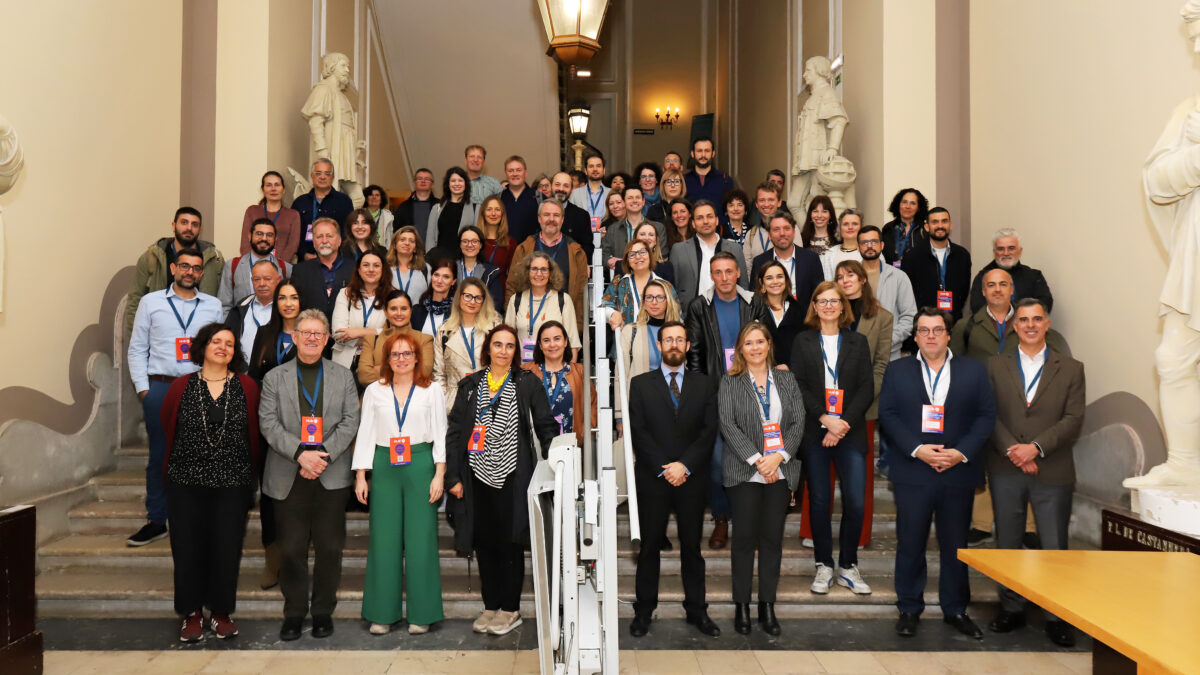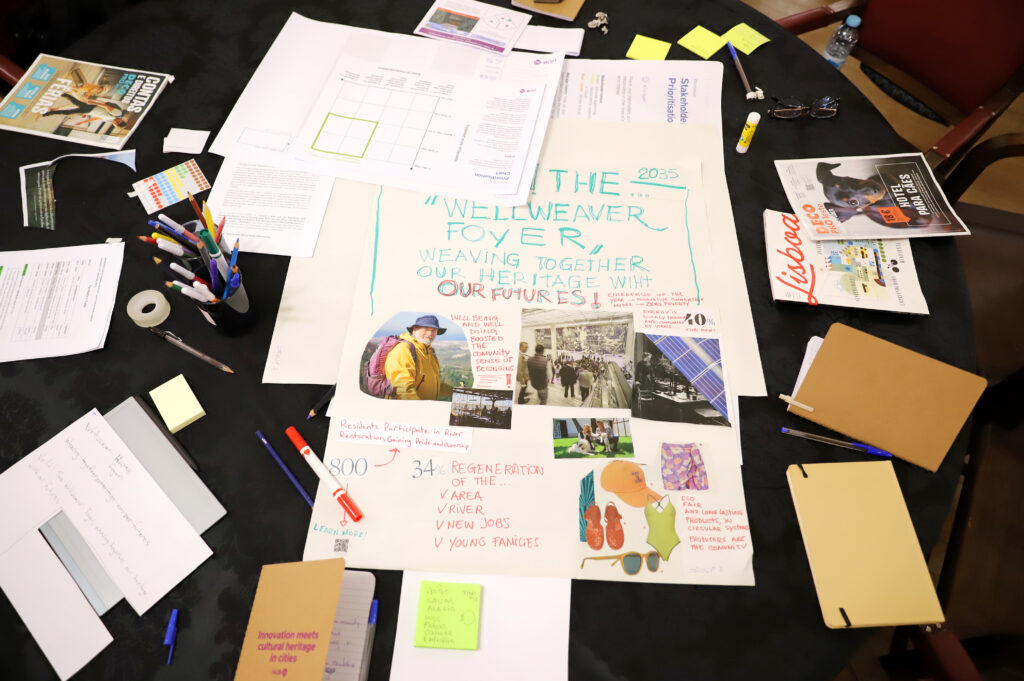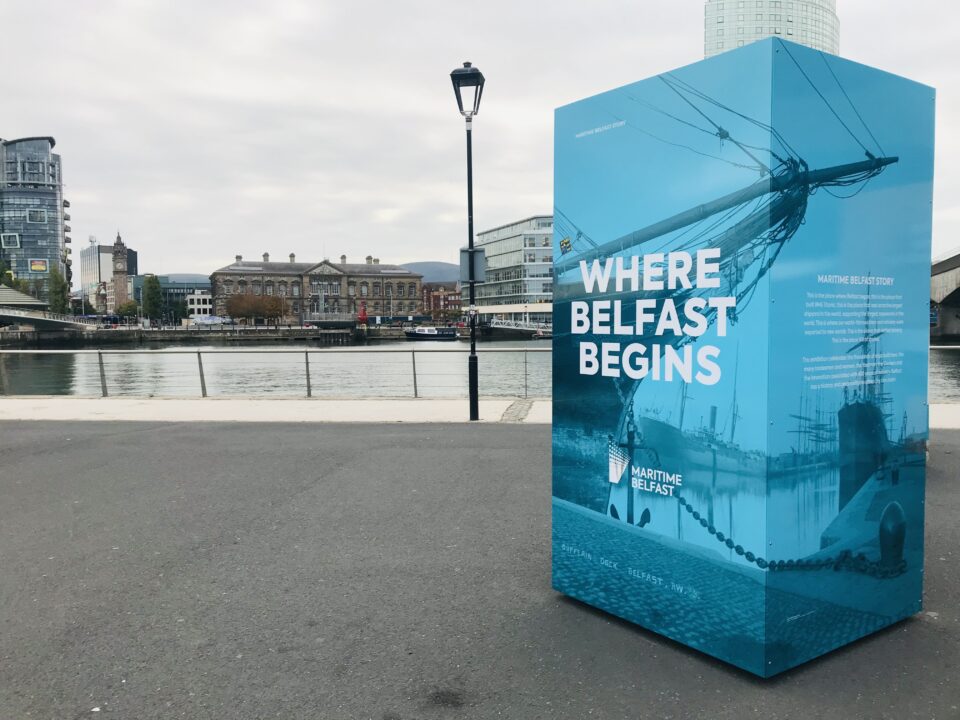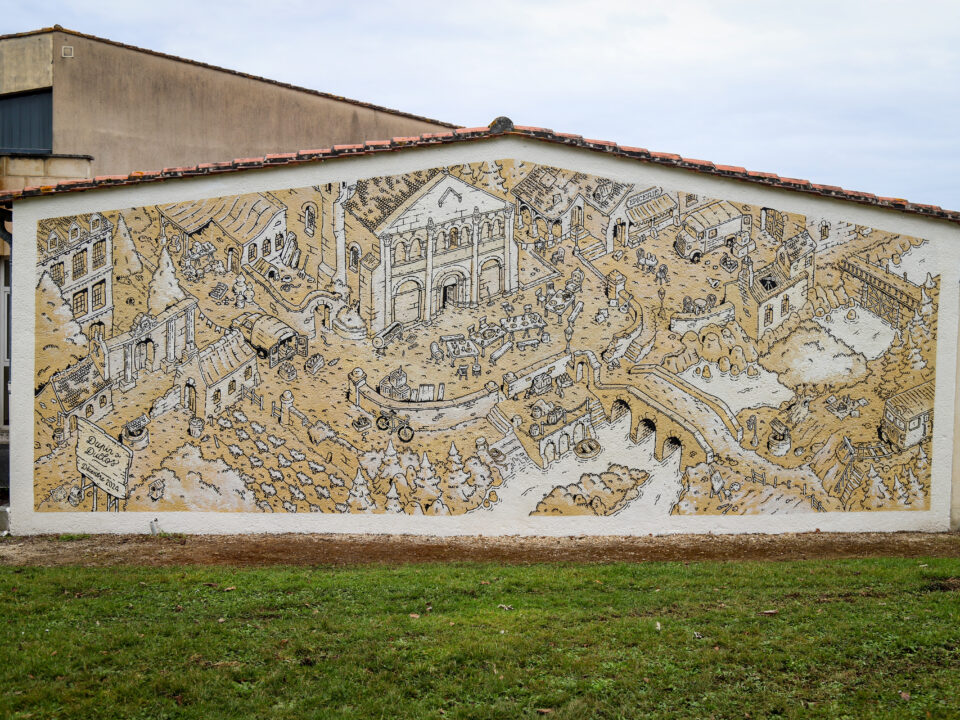

An inspiring 2-day event exploring how our cities can be vibrant places to live in
Over the past four years, the HUB-IN project has used innovation and entrepreneurship to regenerate Historic Urban Areas (HUA) towards more sustainable, inclusive, and livable cities.
Now that the project is about to end, on 26 and 27 November, we held the 2-day event Innovation meets cultural heritage in cities. More than just a closing conference dedicated to sharing knowledge and lessons learned, this was a great opportunity to think about the future of European urban sustainability. As regenerating cities isn´t just done in four years of a European project, the debate centered on the opportunities to continue feeding the wheel effect necessary for the ongoing transformation of cities, involving local communities and actors. In this context of continuity, the foundations were laid for the HUB-IN Alliance of cities.
The magnificent Sala Portugal of Lisbon Geographical Society hosted the event. What a perfect place in the historic centre of Lisbon to inspire a conference focused on innovation and cultural heritage!


Sofia Guedes Vaz, the host of the conference as well as the ethical advisor for the project, welcomed the guests with Carlos Contente Sousa, the executive administrator of Lisboa E-Nova.
Sofia Vaz invited the cities to join the Hub-IN Alliance under a “century-old building blending the past with the future by creating a new beginning that ensures the future of HUB-IN”.
The Innovation Council advisor for Lisbon Antonio Pereira da Silva and the EU political counsellor representative Carlos Morais Pires also framed the project as part of the cities carbon neutrality goals for Europe.
SESSION 1 – New European Bauhaus Initiative: European strategies and priorities on urban regeneration
The session, moderated by Vera Gregório, opened with an introduction to the New European Bauhaus (NEB) initiative, emphasizing its focus on sustainability, beauty, and inclusiveness in urban regeneration and its alignment with HUB-IN’s heritage-led innovation goals.
Solène Laeticia Gautron, from European Commission, shared NEB’s origins, vision, and its role in fostering innovation through sustainability, beauty, and inclusiveness. Brian Smith emphasized how NEB’s principles align with HUB-IN to promote heritage-led urban regeneration. Margarida Oliveira , National contact point at ANI, presented actionable opportunities for HUB-IN within NEB and Horizon Europe, detailing projects and funding mechanisms to support practical implementations.
Watch the video of the session here!

SESSION 2 – Collaborative dialogues: Building Hubs of Innovation across European cities
This session explored how the HUBs can drive entrepreneurial regeneration in HUAs by blending heritage with innovation. Niels Bosma emphasized the Entrepreneurial Ecosystem approach and the 90 European cases collected in HUB-IN Atlas, demonstrating how heritage components can be flexibly combined to catalyze transformation. Silvia Campailla shared insights from the Genova HUB’s integration with the Caruggi Plan, highlighting impactful initiatives like Fair to Share that have revitalized local entrepreneurial ecosystems. Ronald Kleverlaan explained the importance of rethinking new funding and governance models as the ‘essential ingredients’ for the regeneration of historic areas, identified in the HUB-IN Atlas. Rick Everts showcased Utrecht’s focus on strengthening creative networks through adaptive governance and funding models. Chris Taylor presented the theory of change and monitoring frameworks used across eight pilot cities, emphasizing their importance for creating sustainable and impactful hubs. Moderated by Vera Gregório, the session underscored the synergy of these approaches as essential elements for sustainable urban regeneration.
Watch the video of the session here!

SESSION 3 – Urban dynamics and sustainable development
Joao Seixas (Nova University) made an inspirational presentation on Urban Dynamics and Sustainable Development by focusing on Lisbon’s urban Challenges in 21st century, urban policies and urban communities, and the innovation dynamics going on its historical areas.
Watch the video of the session here!
SESSION 4 – Urban Regeneration LAB: Driving change through Hubs of Innovation
Lisbon and Brasov created their HUBs within the city center, while Utrecht and Belfast in their industrial areas. For each city, a HUB-IN storyteller narrative was created. Andrea Thornbury (Belfast City Innovation Cluster) explained how the long-term plan for the Maritime Mile project will be funded by the Maritime Challenge Fund. Leea Mihaila (ABMEE-Brasov Energy Agency) showed how the City as the Classroom initiative contributed to community awareness and engagement with public spaces. Rick Everts (Municipality of Utrecht) explained that the collar labor narrative of the Werkspoorkwartier – where steel structure was produced – was transformed into a creative community that now creates artwork to be displayed in the industrial buildings. Susana Paulo (Municipality of Lisbon) explained how HUB-IN Colina do Castelo bridged the local stakeholders by organizing pop-up events among the creative community (ceramists), opening calls among entrepreneurs and reaching out to the local community.
Watch the video of the session here!

SESSION 5 – Talk show: innovation journeys and testimonies across Europe
Some testimonies of project leaders served as inspiration for the audience. Project leaders from Brasov, Belfast, Utrecht and Lisbon told their own journey through the creation and implementation of their HUB project. Alexandru Belenyi (Brasov municipality) presented the design-built project Pretext (video). Dafydd Williams (Ulster Touring Opera) presented the hologram project for the Belfast Maritime Mile (video). Gabrielle Muris (Urban Impact) presented the recycling industrial building project, in Utrecht Cartesius weg video. Carla Fernandes (Nova University) presented a T-Factor project called Living Memories in Trafaria (video). Mária Fernandes and Rafael (Comvidarte) presented the project Between Tiles and Stories developed for Colina do Castelo, Lisbon (video).
SESSION 6 – Laying the Foundation for the Innovation and Heritage Alliance
HUB-IN Alliance was presented by Brian Smith as a joint venture between the pilot cities, follower cities and the new cities. By joining the Alliance, cities can get different experiences: pilot cities can get support in expanding their HUB-IN; follower cities can get guidance in creating their HUBs and access to tested methodologies; new cities can find opportunities for partnerships, knowledge exchange, and visibility.
Vera, Brian, and Solène are confident that HUB-IN will pursue synergies with the New European Bauhaus with a focus on sustainability, inclusivity, and beauty, by using cultural heritage to drive innovation and competitiveness, and a place-based approach focused on communities. The follower cities of Palmela, Mostar (Bosnia- Herzegovina), Corigliano-Rossano, Arad (Romania) were invited to explain each city’s historical background and interest in developing their own HUB-IN. Watch the video of the session here!
Led by Diana Henriques, the Adufe & Alguidar group entertained guests by playing and singing traditional music Watch the performance here!


HUB-IN Academy Workshop: Learn how to create a HUB-IN
On the second day, the HUB-IN Academy organized a hands-on workshop with 70 participants to apply the tools available on the HUB-IN Toolkit.
The objectives were to promote peer-to-peer learning and cross-fertilization exchanges between pilot cities, potential follower cities, and participants of the workshop, while leveraging the expertise of pilot cities. Participants had the chance to:
- Experiment new collaborative working methods to enhance practical application of the HUB-IN tools and HUB-IN Academy;
- Put in practice and emphasizing some lessons learned during the HUB-IN process;
- Develop their capacity building with the knowledge and skills needed to set up and manage their own HUB-INs;
- Inspire future action and motivating peers to implement innovative projects in their communities, while promoting the adoption of innovative approaches.
In the end of the session, all groups prepared and made a pitch of the concept of the HUB they imaged.


Time to visit Lisbon’s HUB-IN!
The conference workshop was followed by an immersive exhibition at the Mouraria Creative Hub (HCM), an incubator for creative industries that can host 30 residence projects. The exhibition displayed the activities that took place in HUB Lisbon Colina do Castelo. The activities were presented through videos, images, and also narrated by storytellers (Inês Cabral, Mariana Cunha, Susana Paulo, André Martins, Orlando Anselmo) and artisans like Manuel Ferreira (reed craftsman) and local ceramists from Colina do Castelo who do research and reproduce objects with history.
The outdoor courtyard of HCM displayed artwork by a street artist (GColors) who painted a mural inspired by Nature’s elements (air, water, fire and earth) as an homage to environmental sustainability to be promoted in historic neighborhoods. To demonstrate how historic urban areas can reach NZEB goals, a PV installation over the zinc roof and a new living wall was planted in a small patio to mitigate the heat island effect, which is common in dense areas like Mouraria.
Finally, the immersive exhibition was finalized with a guided tour by Ana Fernandes Pinto (Culture in translation) from HCM to Portas do Sol, presenting the multicultural legacy of the built heritage and its transformation by urban innovation.


The project might be about to end, but thanks to the HUB-IN Alliance the urban regeneration of Europe will continue!




